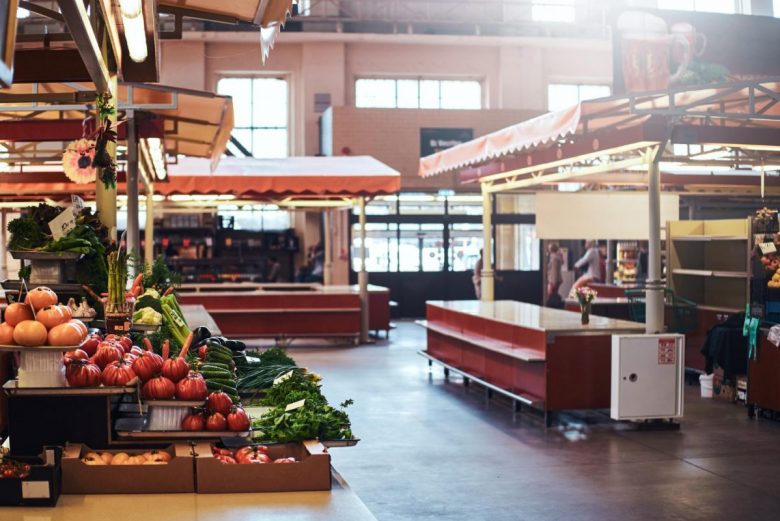While the term “supermarket” has traditionally been used to describe larger retail stores that sell a variety of items from home goods to food items, these days grocery stores and supermarkets are used interchangeably. This means that a supermarket can include giants like Walmart and Target but can also include local grocery stores that are big enough to house other items besides food.
In this article, we will talk about some of the major goals for supermarkets and grocery store businesses to pursue.
Setting business goals is important for every type of business. When a business has clear goals, it can spend its time and resources more effectively. The short-term, long-term and even medium-term goals can help the business understand where it is and how well it is doing.
For example, if a business has clear long-term goals, to branch out but is having an issue with one of its short-term sales goals, it can focus more intently on those short-term goals. Entrepreneurs and business owners looking to enter the grocery or supermarket segment should know the challenges and set goals to guide them over those humps.
1. Increase Foot Traffic & Sales
Boosting sales remains a central objective for any supermarket. One of the best ways to do that is to increase foot traffic. In fact, this should be the goal of any retail business. If foot traffic is consistently on the incline, you can expect a supermarket to enjoy immediate and long-term success.
There are many ways to do this. One of the most popular and most effective is the” buy one, get one” (BOGO) offer. This strategy which dates back to the early 1900s is still used today by startups, small businesses, and corporations. Why? Because it is still an effective way to get people to purchase.
In fact, one study finds, that A jaw-dropping 93% of all shoppers have used a BOGO — and 66% of them say it’s their favorite type of discount. Supermarkets like Publix regularly use this offer to help bring in customers who would not usually purchase their higher-priced items.
For supermarkets, driving foot traffic is essential. Whether it is using engaging and effective signage, collaborating with local businesses for cross-promotions, online marketing, or email mailers, getting more people into the door should be one of the most important goals for a supermarket.
2. Increase Sales of Non-Food Products or Services
Most people know that when they go to the supermarket they are going to find the food they need and are looking for. However, modern supermarkets are now going beyond being mere food providers. For example, the well-known supermarket chain Publix offers in-house services such as bakeries, coffee shops, and florists services. All of this helps the appearance of the store and can also help foot traffic
However, small supermarket chains may not be able to house all of these services under one roof. An alternative may be to find non-food products and services that are in demand but do not require much space. One of the goals should be to find those items and services in the area that will help drive customers to the store. Or, it can also be those products and services that customers will utilize just because the supermarket offers them.
For example, a supermarket can begin stocking greeting cards, flowers, and balloons near checkout lanes. This can make it convenient for customers who are in the store looking to get these things for a friend, family member, or co-worker’s birthday, retirement, or graduation. Since these do not need a lot of space, they can help create quick sales and help customers avoid going to bigger or more specialty stores for those items.
Here are some other potential items to keep well-stocked
- Toothpaste
- Deodorant
- Female products
- Diapers
- Paper plates
- Plastic utensils
A local supermarket may want to run sales or lower the prices of these items. That way, customers who need to do their grocery shopping may choose their store since the price of the non-food items they need is lower.
3. Improve Inventory Management
Efficient inventory management is the backbone of a supermarket’s smooth operation. It’s not just about stocking up; it’s about understanding demand patterns. It will not only help make sure customers find what they need, but it will also help with minimizing waste (more on that later).
Advanced inventory systems, incorporating AI and machine learning, can help predict sales trends. Also, conducting regular audits can identify slow-moving items better. On the flip side, understanding which products are top sellers can ensure they are always available. One way to earn dissatisfied customers is by not having what they need when they need it.
Collaborate closely with suppliers. When supermarkets do this type of relationship building, it can help with timely deliveries. Hopefully, soon after, owners can negotiate bulk purchase rates and even work on exclusive product offerings.
4. Minimizing Waste of Short Shelf-Life Products

Image by pch.vector on Freepik
Wasted items due to expiration are a frustrating problem for supermarkets. As a supermarket, you want to have those items in stock for your customers. On the other hand, if they sit on the shelves too long and expire, you lose out on those potential sales and create waste. That’s why managing the wastage of short shelf-life products is critical. Not only from a financial perspective, but also an ethical one. Nobody likes wasted food so you must learn to do something so that the potential for loss doesn’t grow. Here are some steps to take to help with short shelf-life products.
- Know Your Demand Patterns: You must understand your customer’s purchasing trends. This way a supermarket will only stock what is likely to sell before expiration.
- Use the FIFO Method: “First In, First Out,” means you always sell the oldest stock first. This approach is particularly effective for perishable goods.
- Implement Cycle Counting: Regularly verify the inventory in smaller sections to ensure accuracy. This helps identify and address any discrepancies quickly. Done right, you will reduce the risk of overstocking perishable items.
- Optimize Your Ordering and Replenishment: Use data to fine-tune your ordering quantities and timing.
- Discount Prices When Expiration Date Nears: This is an old-fashioned way of getting things off of the shelves but it still works to this very day. Offer discounted prices for products approaching their expiration date. This strategy can stimulate quick sales, reducing waste while still generating revenue.
5. Find Your Niche
The supermarket and grocery market is somewhat saturated. That is why differentiation is key. With big players like Walmart, Target, and Whole Foods looking to capture every customer, local and smaller supermarkets need to differentiate themselves. The best way to do this is to cater to a specific niche.
If done the right way, it will help with foot traffic simply because customers will come looking for something specifically that meets their needs while avoiding what comes with visiting other stores.
Let’s take the example of Publix again. Generally, prices at Publix for grocery items are more expensive than at a store like Walmart. However, loyal Publix shoppers still prefer the store due to something they seemingly cannot get at other stores.
That could include customer service, items that are in stock, or just better quality items. For example, one of Publix’s strengths is its deli. Many customers line up to purchase the chain’s signature sub sandwiches. Most customers also believe that Publix has a superior bakery. Likewise, a grocery store’s bakery goals could be to specialize in rare pastries.
For supermarkets, finding what customers want and are not getting is an important step. Perhaps customers would like a store like Publix but smaller. Maybe a supermarket could focus more on healthy foods and fresh fruits and vegetables.
Or maybe the store can focus on ethnic foods that cannot be found in larger chains. Knowing who the supermarket wants to serve is one of the most important goals market owners can set. By doing this, you can focus on the target market and do everything possible to meet their needs.
6. Improve Cash Management
Cash management is more than just handling daily receipts; it’s a function that directly impacts a supermarket’s financial health. Efficient cash management makes sure that there’s always enough liquidity for daily operations while optimizing returns on idle funds.
One way to do this is by leveraging technology. Modern point-of-sale systems integrated with accounting software can provide real-time insights into cash flow. This helps managers make informed decisions about expenditures, investments, and debt servicing.
It is also possible to negotiate favorable payment terms with suppliers. This will help manage your cash better as the monthly debt payments are lower. Another option is bulk purchasing or early payment discounts can further optimize costs. On the consumer side, offering various payment methods, including credit, digital wallets, or loyalty points, can accelerate transaction times and improve the overall cash cycle.
7. Open More Locations
A major goal for a supermarket chain should be expansion through the opening of more locations. This initiative isn’t just about increasing a footprint; it’s about carefully selecting locales that align with your brand’s mission and values. While expanding to a new location can be difficult for any brick-and-mortar business, for grocery stores and supermarkets it is an important step.
One of the reasons why this is an important goal is, not only to acquire new customers but to serve the old. Today, Americans move an average of 11.7 times in their lifetime. If a market has loyal customers, most likely those customers will move at some point. Having multiple locations may ensure that even if your customers move away from their closest location, they can find another location by their new residence.
Opening a new location should help foster stronger community ties and create employment opportunities. Each new store will be tailored to reflect the needs and preferences of its local community.
Conclusion
While it may seem that many other retailers have the market cornered on this industry, there are always opportunities to expand. Customer preferences are always changing and they are always looking for businesses to help them meet their needs. By setting clear goals and paying attention to their business and its customers, grocery, and supermarket businesses can address their customer’s pain points while growing their brand.
Also read:
9 Growth Goals for Businesses to Pursue
7 Retail Business Goals to Set If You Want to Succeed
7 Business Goals for a Coffee Shop
5 Short-Term and Long-Term Goals for a Bakery Business












Pingback: 7 Goals for a Supermarket & Grocery Business – Joseph Odierno Buffalo